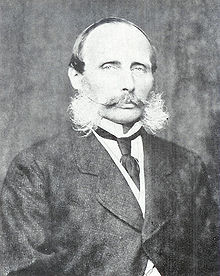Prince_Henry_of_the_Netherlands_(1820–1879)
Prince Henry of the Netherlands (1820–1879)
Dutch prince (1820–1879)
Prince William Frederick Henry of the Netherlands (Dutch: Willem Frederik Hendrik; 13 June 1820 – 13 January 1879) was the third son of King William II of the Netherlands and his wife, Grand Duchess Anna Pavlovna of Russia. He was born at Soestdijk Palace.
You can help expand this article with text translated from the corresponding article in Dutch. (May 2013) Click [show] for important translation instructions.
|
Prince Henry became Governor of Luxembourg in 1850, in which capacity he served until his death in 1879. During his tenure, he worked with the government to launch the reactionary Coup of 1856, which consolidated power in the monarchy and the executive.[1] However, most of the changes were reversed by the new constitution issued in 1868 after the 1867 Luxembourg Crisis,[1] during which the crown tried to sell the grand duchy to France.
